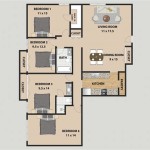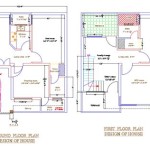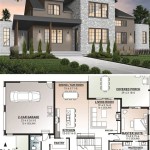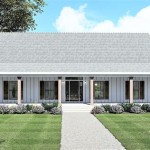Small House Plans with Garage and Basement: Maximizing Space and Functionality
The appeal of small house plans continues to grow, fueled by factors such as affordability, reduced environmental impact, and a desire for simpler living. Integrating a garage and a basement into a small house design presents a unique challenge, requiring careful planning and innovative solutions to maximize space and functionality. This article explores the considerations, advantages, and design possibilities when combining these features in a compact dwelling.
A small house, in general, is defined by its limited square footage, typically ranging from under 1,000 square feet to, in some definitions, up to 1,500 square feet. Adding a garage and a basement to this footprint introduces complexities. The garage needs to be easily accessible yet not overwhelm the visual appeal of the house. The basement, often underground or partially submerged, offers potential living or storage space, but requires careful attention to structural integrity and waterproofing.
Successful integration of these features necessitates a holistic design approach. Consideration must be given to the surrounding landscape, local building codes, and the homeowner's specific needs and preferences. A poorly planned layout can result in a cramped and dysfunctional living space, while a well-executed design can create a comfortable and efficient home.
Key Point 1: Design Considerations for Small House Plans with Garage and Basement
Numerous design considerations come into play when planning a small house with a garage and basement. Several factors must be carefully evaluated to ensure optimal functionality and livability. These considerations include site orientation, garage placement, basement access, and interior layout.
Site Orientation: The orientation of the house on the lot is crucial. Southern exposure can maximize natural light and passive solar heating, reducing energy consumption. Proper orientation can also minimize the impact of prevailing winds and harsh weather conditions. The garage should be positioned to allow easy access to the driveway and minimize obstruction of views. Consideration must be given to local zoning regulations regarding setbacks and building heights.
Garage Placement: The placement of the garage is a significant design decision. Options include an attached garage, a detached garage, or a tuck-under garage. An attached garage offers convenience and direct access to the house, but can dominate the front facade of a small house. A detached garage may offer greater aesthetic flexibility but requires walking outdoors to reach the house. A tuck-under garage, integrated into the basement level, maximizes space but may present challenges with ventilation and drainage.
Basement Access: The method of accessing the basement is another important design element. Internal access, typically via a staircase within the house, provides convenient access but consumes valuable interior space. External access, through bulkhead doors or a walk-out basement, offers greater flexibility for using the basement as a separate living space or storage area. The location and design of the basement entryway significantly impact the usability and aesthetics of the house.
Interior Layout: The interior layout of the house must be carefully planned to maximize the use of space and create a comfortable living environment. Open floor plans can create a sense of spaciousness. Strategic placement of windows and skylights can bring in natural light and minimize the need for artificial lighting. Built-in storage solutions can help to reduce clutter and maximize usable space. The spatial relationship between the living areas, kitchen, bedrooms, and bathrooms must be carefully considered to ensure a functional and harmonious flow.
Garage Door Style and Placement: For attached garages, the garage door can significantly impact the curb appeal of the house. Choosing a door style that complements the architectural style of the house is essential. The placement of the garage door should minimize its visual impact and maintain a balanced facade. Consider options such as carriage-style doors or doors with windows to enhance the aesthetic appeal.
Grading and Drainage: Proper grading and drainage are essential to prevent water damage to the basement. The surrounding landscape should be sloped away from the foundation to direct water away from the house. A well-designed drainage system, including gutters, downspouts, and French drains, can further protect the basement from water intrusion.
Key Point 2: Advantages of Incorporating a Garage and Basement into a Small House
Despite the challenges involved, incorporating a garage and basement into a small house design offers numerous advantages. These advantages relate to increased storage space, potential for additional living areas, enhanced property value, and protection from the elements.
Increased Storage Space: One of the primary benefits of a garage and basement is the increased storage space they provide. In a small house, storage space is often at a premium. A garage can accommodate vehicles, tools, and outdoor equipment, freeing up valuable space within the house. A basement can be used for storing seasonal items, holiday decorations, and other belongings that are not needed on a regular basis.
Potential for Additional Living Areas: A basement can be finished to create additional living areas, such as a home office, a recreation room, a guest bedroom, or even a small apartment. This can significantly expand the usable living space of the house without increasing the footprint on the property. A garage can also be converted into a workshop, a studio, or a home gym.
Enhanced Property Value: Adding a garage and basement can significantly enhance the property value of a small house. These features are highly desirable to potential buyers and can make the house more attractive on the real estate market. A well-maintained garage and a finished basement can substantially increase the resale value of the property.
Protection from the Elements: A garage provides protection for vehicles from the elements, such as sun, rain, and snow. This can extend the lifespan of the vehicle and reduce the need for maintenance. A basement provides a safe haven during severe weather events, such as tornadoes or hurricanes. It can also help to regulate the temperature of the house, keeping it cooler in the summer and warmer in the winter.
Improved Resale Value: A garage and basement greatly improve the resale value of a small home. Buyers often prioritize these features, making the property more appealing and potentially commanding a higher price.
Flexibility for Future Expansion: Even if the basement isn't finished initially, having the space provides future flexibility. As a family grows or needs change, the basement can be converted into living space without requiring major exterior construction.
Key Point 3: Innovative Design Solutions for Small House Plans with Garage and Basement
Creative and innovative design solutions are essential for maximizing space and functionality in small house plans with a garage and basement. These solutions involve utilizing space-saving techniques, incorporating multi-functional elements, and optimizing natural light and ventilation.
Space-Saving Techniques: Space-saving techniques are crucial for maximizing the usable space in a small house. These techniques include using built-in furniture, installing pocket doors, and utilizing vertical space. Built-in furniture, such as bookshelves, cabinets, and window seats, can provide ample storage without taking up valuable floor space. Pocket doors, which slide into the wall, can save space by eliminating the need for swinging doors. Utilizing vertical space, through the use of tall cabinets and shelves, can maximize storage capacity without increasing the footprint of the house.
Multi-Functional Elements: Incorporating multi-functional elements is another effective way to maximize space in a small house. These elements include furniture that can serve multiple purposes, such as a sofa bed, a dining table that can be converted into a desk, and a coffee table with built-in storage. Multi-functional rooms, such as a guest bedroom that can also be used as a home office, can also help to maximize the use of space.
Optimizing Natural Light and Ventilation: Optimizing natural light and ventilation can create a more comfortable and livable environment in a small house. Large windows and skylights can bring in natural light and reduce the need for artificial lighting. Proper ventilation can help to prevent moisture buildup and improve air quality. Positioning windows strategically to maximize cross-ventilation can help to keep the house cool in the summer.
Smart Storage Solutions: In a small home, smart storage is paramount. Utilizing every nook and cranny is key. Consider under-stair storage, built-in shelving units, and customized closet organizers to maximize space.
Adaptable Floor Plans: Designs that allow for flexible room usage are highly beneficial. A living room that can easily transform into a guest room or a dining area that doubles as a workspace can enhance the functionality of the home.
Efficient Use of Vertical Space in the Garage: Incorporate shelving units, overhead storage racks, and wall-mounted tool organizers to maximize the vertical space in the garage. This will keep the floor clear and make it easier to move around.
Integrating a garage and a basement into a small house plan requires careful consideration of numerous design factors. By employing innovative solutions and maximizing the use of space, it is possible to create a functional, comfortable, and aesthetically pleasing home that meets the needs of its occupants.

Small Cottage Plan With Walkout Basement Floor

Small House Floor Plans With Basement

Small Cottage Plan With Walkout Basement Floor

Affordable House Plans Home Designs The Designers

Cottage Plans And Cabin With Finished Basement Floor

Pin By Mária Könnyü On Floor Plans Garage Apartment House Tiny
Small 2 Bedroom Bungalow Plan Unfinished Basement 845 Sq Ft

House And Cottage Plans 1000 To 1199 Sq Ft Drummond

Drive Under House Plans With Basement Garage The Designers

Small Cottage Plan With Walkout Basement Floor House Plans Homes








